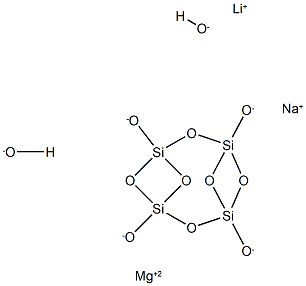Hectorite is a naturally occurring 2 : 1 phyllosilicate clay of the
smectite (montmorillonite) group and is a principal component of
bentonite clay. Hectorite occurs as an odorless, white to creamcolored,
waxy, dull powder composed of aggregates of colloidalsized
lath-shaped crystals.
hectorite is one of the principal constituents of bentonite clay. used as a thickener and suspending agent in water-based systems in oil-in-water emulsions.
In the chill-proofing of beer: Shaler et al., US 3100707 (1963 to American Tansul).
Naturally occurring hectorite is mined from weathered bentonite
deposits. It is further processed to remove grit and impurities so that
it is suitable for pharmaceutical and cosmetic applications.
Pharmaceutical Applications
Hectorite is used widely in pharmaceutical preparations as an
absorbent, emulsifier, stabilizer, suspending agent, thickener, and
viscosity-controlling agent.
Hectorite is a component of other naturally occurring clays and
hence may be suitable for use in similar pharmaceutical formulation
applications as an adsorbent, oil-in-water emulsifying agent,
suspending agent, or viscosity-increasing agent. It is also available
as a synthetic material. Hectorite is used to modify the thixotropic
behavior of pharmaceutical dispersions and for stabilizing oil-inwater
emulsion bases. When combined with an appropriate cation, hectorite exhibits properties suitable for use as a contrast
agent.
Hectorite is a natural clay mineral that is not considered acutely
toxic; therefore no toxicity values have been established. However,
hectorite may contain small amounts of crystalline silica in the form
of quartz.
Dust can be irritating to the respiratory tract and eyes, and
contact with this material may cause drying of the skin. Chronic
exposure to crystalline silica may have adverse effects on the
respiratory system. EU labeling states that the material is not
classified as dangerous.
Hectorite is a stable material and should be stored in a cool, dry
place.
Contact between hectorite and hydrofluoric acid may generate heat.
Reported in the EPA TSCA Inventory.

